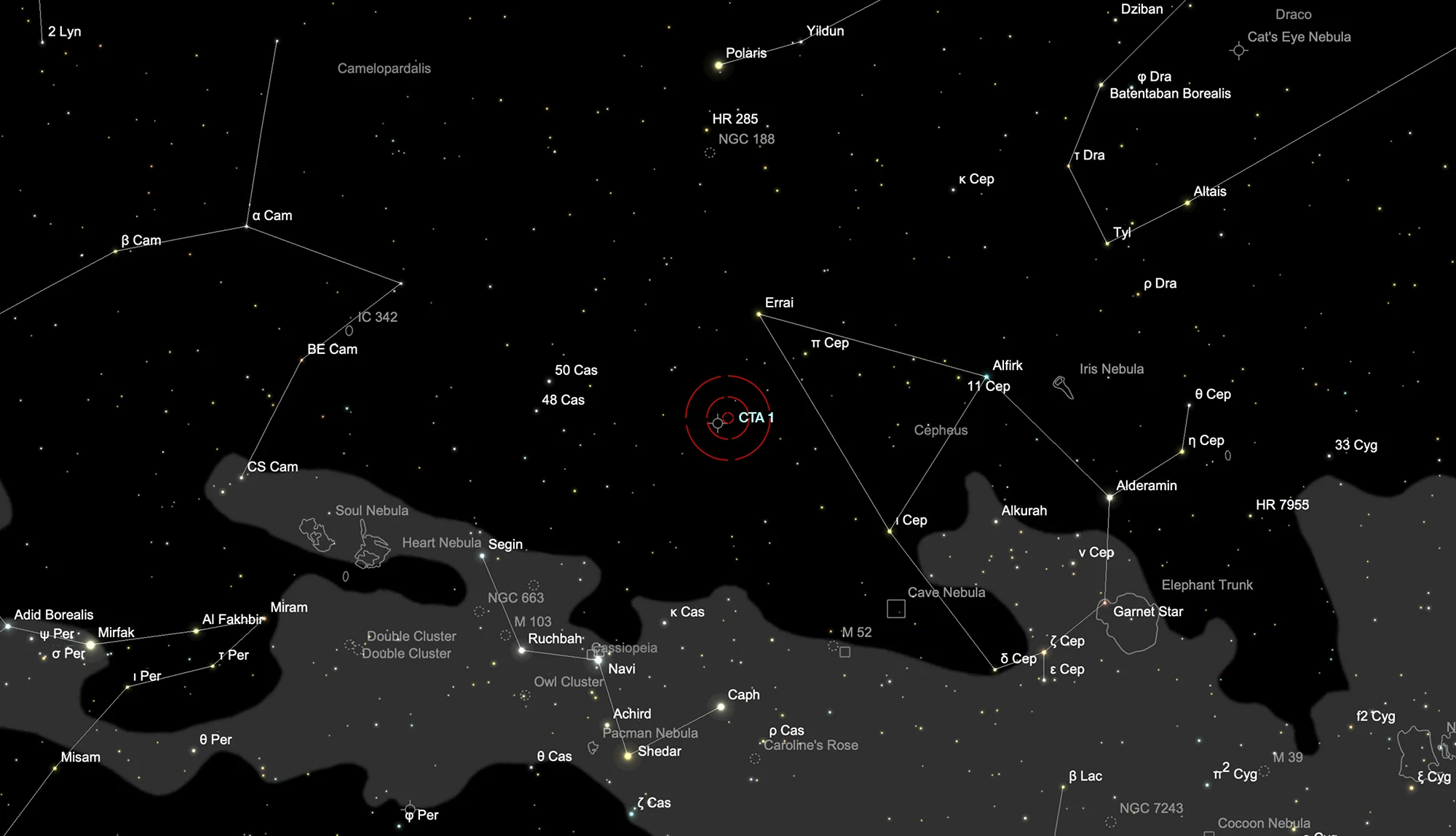Supernova Remnant CTA 1

History
This object CTA 1 was discovered as a radio source in 1960 by D. E. Harris and J. A. Roberts. They used one of the equatorially mounted 90-foot paraboloids of the Owens Valley Observatory and studied 106 radio sources, six of them were new discoveries. They noted for CTA 1: «Faint wisp of emission in Schmidt plate agrees with radio-intensity distribution. Possibly supernova remnant.» The «CT» is an abbreviation for «Caltech» and the letter «A» denotes the first list of radio sources published by this observatory. [696]
Physical Properties
In the centre of CTA 1 is a γ-ray pulsar PSR J0007.0+7303 with a period of 316.86 ms, embeded in a nebula and a jet-like feature. The distance is estimated to 1.4 kpc and the age of the supernova remnant is estimated to 10'000 years. [697] The radio remnant of the Supernova which can be identified as a faint glowing nebula is an incomplete shell with a diameter of around 100 arcminutes. [698]
| Name | CTA 1 |
| Object Type | Supernova Remnant |
| Right Ascension (J2000.0) | 00h 06m 36s |
| Declination (J2000.0) | +72° 47' 00" |
| Angular size | 90' × 90' |
| Identifiers | 1H 0007+731; 1XRS 00000+726; 2E 0004.4+7245; 2E 18; 3A 0004+725; 4U 0000+72; CTA 1; GAL 119.5+10.2; GRS G119.50 +10.20; INTREF 3; SNR G119.5+10.2; TeV J0006+727 |
Finder Chart
The supernova remnant CTA 1 is located in the constellation Cepheus and overlaps with planetary nebula NGC 40. It is circumpolar for Central Europe. On 25 September it is in opposition to the Sun and crosses the meridian at local midnight. The best time to observe is June to February, when the constellation is highest at night.
